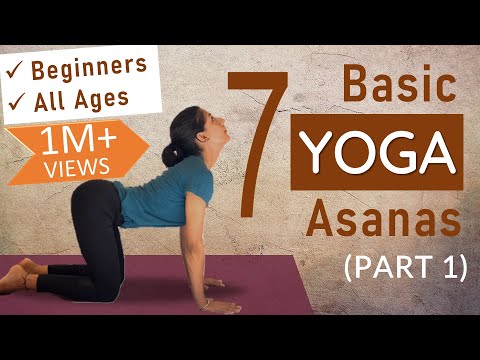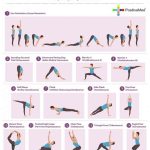Begin Your Yoga Journey: Simple Steps for a Balanced Practice
Yoga, an ancient practice originating in India, has become a globally recognized method for improving mental, physical, and spiritual well-being. Whether you’re aiming for flexibility, stress relief, or holistic health, yoga can offer a personalized path to meet your goals. Starting yoga can feel overwhelming, but with the right guidance, anyone can enjoy its benefits. This article provides a comprehensive guide to help you begin your yoga journey in simple, actionable steps. We’ll cover foundational concepts, historical context, current trends, and practical applications for beginners and experts alike.
Key Concepts in Yoga
Yoga is more than just physical exercise; it’s a practice that integrates mind, body, and spirit. Understanding the following key concepts is essential to getting started:
- Asanas – Physical postures designed to improve flexibility, strength, and balance.
- Pranayama – Breathing techniques that enhance control of the body’s vital energy.
- Meditation – A mental practice focusing on mindfulness and relaxation.
- Yamas and Niyamas – Ethical guidelines that help create harmony with yourself and the world.
Historical Context of Yoga
Yoga has its roots in ancient Indian philosophy, dating back over 5,000 years. Initially, it was a spiritual discipline practiced by ascetics to achieve enlightenment. The Yoga Sutras, written by the sage Patanjali around 400 CE, outline the eightfold path (Ashtanga), which remains foundational to many yoga practices today.
In the 20th century, yoga was popularized in the West, with figures like Swami Vivekananda and later T.K.V. Desikachar and B.K.S. Iyengar introducing it as a method for physical health and mental wellness. Today, yoga is practiced in diverse ways, ranging from fitness-centric approaches to deeply meditative and spiritual forms.
Current State of Yoga Practice
Modern yoga has evolved to meet a variety of needs, from relaxation and stress management to athletic training and therapeutic uses. Some of the most common styles include:
- Hatha Yoga – A gentle introduction focusing on basic postures and breathing techniques.
- Vinyasa Flow – A dynamic form that links movement with breath in a continuous flow.
- Ashtanga Yoga – A rigorous style with a fixed sequence of postures and a strong focus on breath control.
- Yin Yoga – A slower, meditative practice focused on holding poses for long periods.
Regardless of the style, the core principles of yoga—balance, mindfulness, and breath—remain consistent.
Practical Applications of Yoga for Beginners
For beginners, starting with a simple and accessible routine is key to developing a sustainable yoga practice. Here are practical steps to begin:
- Select a Suitable Style: Choose a style that aligns with your goals. If you’re looking to relax, try Hatha or Yin Yoga. If you’re more active, Vinyasa or Ashtanga may be a better fit.
- Start with Basic Postures: Begin with foundational poses like Downward Dog, Child’s Pose, and Warrior I. These will help build strength and flexibility.
- Focus on Breath Control: Learning to control your breathing through Pranayama techniques is crucial in maintaining focus and calm during your practice.
- Create a Comfortable Space: Find a quiet, comfortable space where you can practice regularly, free from distractions.
- Consistency Over Intensity: It’s better to practice a little every day than to push yourself too hard. Consistency builds discipline and long-term results.
Case Studies: Real-World Yoga Success Stories
Here are some inspiring stories of individuals who transformed their lives through yoga:
| Individual | Challenges | Yoga Approach | Outcome |
|---|---|---|---|
| Sarah (age 45) | Chronic back pain, stress | Yin Yoga and Meditation | Reduced pain, improved mental clarity |
| Michael (age 30) | Weight management, anxiety | Vinyasa Flow, Pranayama | Lost 30 lbs, enhanced focus |
| Lena (age 27) | Flexibility, emotional balance | Hatha Yoga, Mindfulness | Increased flexibility, emotional stability |
Stakeholder Analysis: Who Benefits from Yoga?
Yoga offers a wide range of benefits, impacting different groups in various ways:
- Individuals: Experience improved physical health, mental clarity, and stress management.
- Healthcare Providers: Use yoga as a therapeutic tool to support physical rehabilitation and mental health treatments.
- Corporate Settings: Integrating yoga in the workplace enhances employee well-being and productivity.
Implementation Guidelines for Beginners
Implementing yoga into your daily life can be straightforward with these steps:
- Set Realistic Goals: Determine what you want to achieve with yoga, whether it’s stress relief, fitness, or mental clarity.
- Use Online Resources: Take advantage of online classes and tutorials if you can’t access a local studio.
- Join a Community: Practicing with a group or community can provide motivation and support.
- Track Progress: Keep a journal or use an app to track your physical and mental progress.
Ethical Considerations in Yoga Practice
As yoga becomes more popular, certain ethical considerations arise:
- Cultural Appropriation: It’s important to recognize and respect yoga’s deep cultural and spiritual roots in India.
- Inclusivity: Yoga should be accessible to people of all backgrounds and body types, promoting diversity and inclusion.
- Commercialization: The commercialization of yoga can sometimes dilute its original purpose, shifting the focus from spiritual growth to profit.
Limitations and Future Research in Yoga
Despite the benefits of yoga, there are some limitations:
- Not all individuals may experience the same benefits; some may need complementary therapies.
- Scientific research on the long-term health impacts of yoga is still developing. More large-scale studies are needed to confirm its effects on specific conditions.
- Future research should explore the integration of yoga with other holistic health practices to provide a more comprehensive approach to wellness.
Expert Commentary
As we look to the future of yoga, experts agree that it will continue to evolve, particularly with its integration into healthcare and fitness industries. Yoga practitioners emphasize the need to preserve the authenticity of the practice while adapting it to meet modern needs. A balanced approach—honoring yoga’s roots while embracing new research and methods—will ensure its longevity and effectiveness for generations to come.








